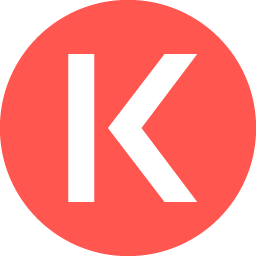Top Layer 1 tokens by market capitalization
Layer 1 contains 139 coins with a total market capitalization of $810.25B and an average price change of +6.94%. They are listed in size by market capitalization.
Layer 1 refers to the fundamental protocol layer of a blockchain network, constituting the underlying infrastructure that defines the core attributes of the digital asset system. At Layer 1, the bedrock of the decentralized framework is established through elements like consensus mechanisms (e.g., Proof-of-Work or Proof-of-Stake), cryptographic primitives (such as hash functions and digital signatures), and the native asset's distribution and issuance rules. This layer is responsible for creating the genesis block and constructing subsequent blocks that contain validated transactions, ensuring data integrity and immutability through cryptographic techniques. Additionally, Layer 1 defines the token's supply and monetary policy, enabling the enforcement of smart contracts and governance mechanisms that govern the network's operation.
See more
| Name | Price | 24h (%) | 7D (%) | Market cap | 24h volume | Supply | Last 24h | Operation | |
|---|---|---|---|---|---|---|---|---|---|
 EthereumETH | $3,235.69 | -2.64% | -5.50% | $389.91B | $22.24B | 120.50M | Trade | ||
 SolanaSOL | $258.1 | +3.73% | +26.38% | $125.56B | $8.88B | 486.49M | Trade | ||
 BNBBNB | $695.53 | +0.62% | -2.43% | $100.16B | $1.77B | 144.01M | Trade | ||
 CardanoADA | $0.9820 | -2.11% | -8.41% | $34.54B | $979.50M | 35.17B | Trade | ||
 TRONTRX | $0.2543 | +3.97% | +7.68% | $21.90B | $1.08B | 86.14B | Trade | ||
 AvalancheAVAX | $36.85 | +0.18% | -6.71% | $15.16B | $309.03M | 411.57M | Trade | ||
 SuiSUI | $4.45 | -- | -- | -- | -- | -- | Trade | ||
 ToncoinTON | $5.25 | -- | -- | -- | -- | -- | Trade | ||
 HederaHBAR | $0.3238 | -3.21% | +1.15% | $12.39B | $476.12M | 38.27B | Trade | ||
 Bitcoin CashBCH | $435.59 | -2.44% | -4.73% | $8.63B | $243.18M | 19.82M | Trade | ||
 NEAR ProtocolNEAR | $5.1 | -2.72% | -3.97% | $6.00B | $223.08M | 1.18B | Trade | ||
 AptosAPT | $8.46 | -- | -- | -- | -- | -- | Trade | ||
| $9.03 | -- | -- | -- | -- | -- | Trade | |||
 CronosCRO | $0.1409 | +1.95% | -1.51% | $3.74B | $59.29M | 26.57B | Trade | ||
 AlgorandALGO | $0.4050 | -4.84% | -8.96% | $3.40B | $232.10M | 8.39B | Trade | ||
 CosmosATOM | $6.19 | -0.43% | -6.42% | $2.42B | $167.69M | 390.93M | Trade | ||
 InjectiveINJ | $21.37 | -5.56% | -6.93% | $2.11B | $102.39M | 98.97M | Trade | ||
 Theta NetworkTHETA | $2.04 | -3.04% | -14.63% | $2.04B | $28.06M | 1000.00M | Trade | ||
 XDC NetworkXDC | $0.1228 | +5.90% | -9.36% | $1.83B | $56.01M | 14.93B | Trade | ||
 FlareFLR | $0.02796 | -5.86% | +9.28% | $1.59B | $16.33M | 57.03B | Trade | ||
 MovementMOVE | $0.6801 | -2.83% | -18.48% | $1.56B | $97.51M | 2.30B | Trade | ||
 SeiSEI | $0.3472 | -- | -- | -- | -- | -- | Trade | ||
 TezosXTZ | $1.18 | -2.86% | -12.19% | $1.21B | $33.82M | 1.03B | Trade | ||
 FlowFLOW | $0.6904 | -3.80% | -11.37% | $1.08B | $37.34M | 1.56B | Trade | ||
 AIOZ NetworkAIOZ | $0.8227 | -5.59% | -21.35% | $947.84M | $26.05M | 1.15B | |||
 MultiversXEGLD | $31.06 | -3.24% | -11.54% | $863.23M | $25.97M | 27.79M | Trade | ||
 ChilizCHZ | $0.07610 | -2.05% | -12.25% | $712.14M | $43.36M | 9.36B | Trade | ||
 eCashXEC | $0.{4}3342 | -2.35% | -10.45% | $662.29M | $39.18M | 19.82T | |||
 RoninRON | $1.65 | -- | -- | -- | -- | -- | Trade | ||
 GnosisGNO | $228.01 | -2.81% | -10.55% | $589.92M | $9.13M | 2.59M | Trade | ||
 KavaKAVA | $0.4835 | +0.68% | -2.83% | $523.61M | $28.85M | 1.08B | Trade | ||
 OasisROSE | $0.06606 | -- | -- | -- | -- | -- | Trade | ||
 AstarASTR | $0.05344 | -3.26% | -15.73% | $400.11M | $15.78M | 7.49B | Trade | ||
 OriginTrailTRAC | $0.6861 | -5.89% | -9.27% | $343.04M | $2.87M | 500.00M | Trade | ||
 HarmonyONE | $0.02189 | -3.10% | -17.96% | $314.72M | $12.46M | 14.38B | Trade | ||
 Enjin CoinENJ | $0.1682 | -2.06% | -20.83% | $302.14M | $24.01M | 1.80B | Trade | ||
 ZetaChainZETA | $0.4732 | -- | -- | -- | -- | -- | Trade | ||
 QubicQUBIC | $0.{5}2386 | -2.94% | -9.85% | $269.56M | $3.46M | 112.96T | Trade | ||
 aelfELF | $0.3855 | -0.40% | -18.49% | $284.72M | $11.80M | 738.61M | Trade | ||
 ChiaXCH | $19.34 | -2.85% | -20.10% | $269.96M | $7.65M | 13.96M | |||
 KadenaKDA | $0.8389 | -7.25% | -2.78% | $253.80M | $17.66M | 302.54M | Trade | ||
 HiveHIVE | $0.4014 | +0.93% | -21.16% | $200.99M | $14.30M | 500.75M | Trade | ||
 CasperCSPR | $0.01380 | -2.95% | -15.38% | $176.46M | $6.67M | 12.79B | Trade | ||
 ZanoZANO | $12.33 | -4.68% | -20.88% | $165.60M | $590,775.19 | 13.43M | |||
 RadixXRD | $0.01526 | -7.58% | -21.74% | $162.55M | $1.63M | 10.65B | Trade | ||
 Vanar ChainVANRY | $0.08504 | -4.77% | -19.68% | $157.88M | $9.32M | 1.86B | Trade | ||
 ChromiaCHR | $0.1882 | -1.46% | -14.74% | $157.70M | $13.34M | 838.12M | Trade |

